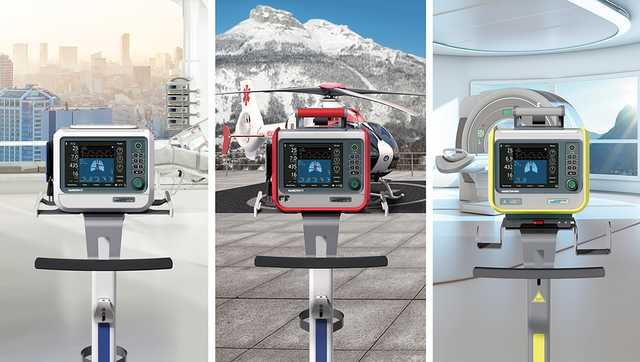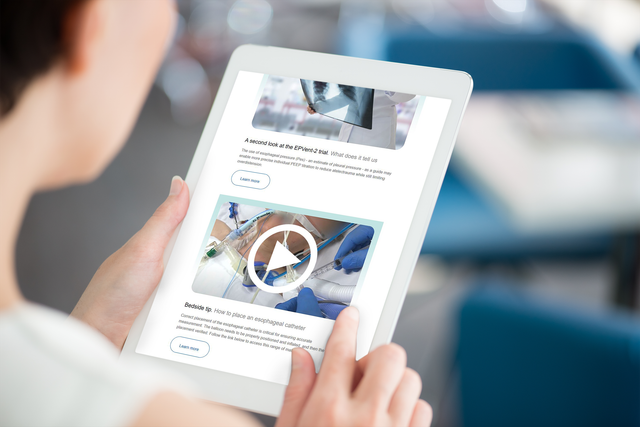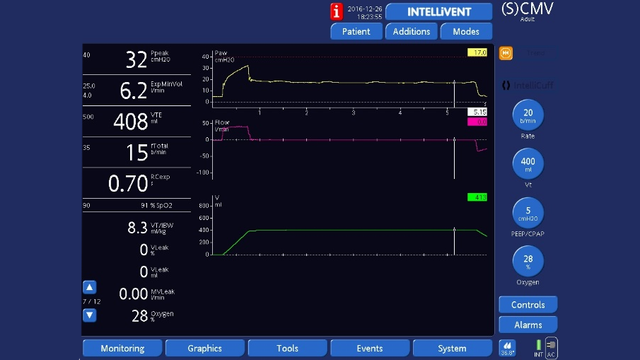
作者: Simon Franz
日期: 14.07.2017

背景
即使“安全”平台压的想法已经受到质疑,使用它来定制急性呼吸窘迫综合征 (ARDS) 病人的肺保护性通气仍然是护理标准
平台压显示作为监测参数
由于 HAMILTON‑C1/T1/MR1 呼吸机中的无阀气动装置,不可能通过执行吸气屏气操作来获得平台压。尽管如此,平台压仍然可以作为监测参数,而且可能会根据您的呼吸机软件进行显示。
| HAMILTON‑C1/T1/MR1 软件 < v2.2.0 | HAMILTON‑C1/T1/MR1 软件 ≥ v2.2.0 |
|---|---|
| 吸气末压力始终显示为平台压。请考虑,如果存在吸气末流量,则显示的平台压高于实际平台压。 | 仅在吸气末流量接近零时,才显示平台压。显示的平台压仍然可以高于实际平台压。 |
在吸气末流量不接近零的情况下计算平台压
在吸气末流量不接近零或吸气末测得的压力不准确的情况下,计算平台压的一种可能的解决方法是:
- 计算驱动压力 (∆P):∆P = VTE/Cstat
- 计算平台压:平台压 = ∆P + PEEP
此计算取决于准确的静态顺应性 (Cstat) 测量,这意味着没有发生显著的病人努力。吸气压应至少为 ~10cmH2O.
平台压 = (VTE ml / Cstat ml/cmH2O) + PEEP cmH2O
示例
呼出潮气量:450 ml;静态顺应性:50 ml/cmH2O;PEEP:8 cmH2O
(450 ml / 50 ml/cmH2O) + 8 cmH2O = 17 cmH2O
平台压 = 17 cmH2O
∆P = 9 cmH2O
另一个优点是您可以获得 ∆P 作为计算的副产物。∆P 与 ADRS 病人的生存率密切相关,因此可能是更有趣的参数
相关设备:HAMILTON‑C1/T1/MR1(所有软件版本)
脚注
参考文献
- 1. Loring SH, Weiss JW. Plateau pressures in the ARDSnet protocol: cause of injury or indication of disease?. Am J Respir Crit Care Med. 2007;176(1):99‑101. doi:10.1164/ajrccm.176.1.99b
- 2. Amato MB, Meade MO, Slutsky AS, et al. Driving pressure and survival in the acute respiratory distress syndrome. N Engl J Med. 2015;372(8):747‑755. doi:10.1056/NEJMsa1410639
Related articles. Get a deeper look

Driving pressure in ARDS patients
ARDS is characterized by lung collapse and consolidation leaving just a small portion of aerated lung remaining, which is at risk of ventilator‑induced lung injuries (baby‑lung concept).

How to measure driving pressure
Airway driving pressure is associated with clinical outcomes in ARDS, post‑surgical, and normal‑lung patients, and is a measure of the strain applied to the respiratory system and the risk of ventilator‑induced lung injuries. Evidence suggests we should keep driving pressure below 14 cmH2O. But how can we measure it?


